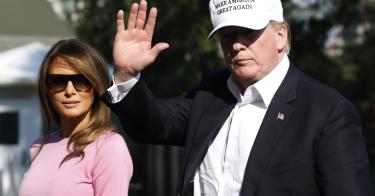This week, President Trump asked Congress to cancel $15 billion in spending. The money has been sitting in accounts for quite some time, without plans for how it should be spent. This should be a no-brainer. Lawmakers should take the president up on this offer, unless they have more insidious plans for these leftover funds.
It used to be fairly common for Congress to rescind unspent funds and apply them to deficit reduction. As my colleague, Justin Bogie, explains, “From 1974 to 2000, presidents proposed approximately 1,200 rescissions, totaling over $77 billion. Congress approved 461 of those rescission requests at $25 billion. On average, Presidents Ford through Clinton rescinded 0.6 percent of discretionary budget authority, with President Reagan being the most successful at 1.3 percent.”
Yet foes of rescission are already out in full force. Writing in Forbes, former House and Senate Budget Committee staffer Stan Collender calls the president’s plan a “PR stunt” and dismisses the amount to be rescinded as “a rounding error.” Others, like Sen. Susan Collins(R-Maine) question how a program she cherishes, such as the State Children’s Health Insurance Program, could possibly have funds it can’t spend. Nearly half of the rescissions in this package come from the those funds that are still on the books but have expired or are otherwise ineligible to be spent anymore.
Another $4.3 billion come from the Advanced Technology Vehicles Manufacturing Loan Program, where funds have been sitting unused for several years. Savings also come from federal responses to the Ebola and bird flu outbreaks that have since been contained. Fans of big government may be loath to let so much as an appropriated dime go unspent, but administrations serve taxpayers well by identifying unspent funds and proposing to apply them to deficit reduction. Repurposing leftover money in this way has fallen out of favor since 2000.
Instead, lawmakers have seized on unspent funds and used them to offset, on paper, new, higher spending on other pet projects. By canceling such funds, the administration is draining a piggy bank that lawmakers have become accustomed to dipping into to escape budget constraints and fuel new spending. The 2018 omnibus provides the latest example of the propensity of Congress to “repurpose” rescinded funds.
Despite appropriating $118 billion more for defense and nondefense programs than the previous year, the 2018 omnibus also rescinded $5.1 billion in previous unspent appropriations, which is money that lawmakers proceeded to mark for expenditure elsewhere in fiscal 2018. Congress’s spending appetite knows no limits.
Congress should run with the president’s rescissions package and claw back funds that might otherwise be used to fuel even more excessive spending. $15 billion may seem like a drop in the bucket of a more than $4 trillion annual budget. But just as the longest journey begins with but a single step, so this single “drop” could revive a process that works to make the government more efficient and helps slim down agency budgets.
Congress has 45 days to respond to the president’s offer. Too much government spending continues to be wasted or misallocated. That imposes a high cost on taxpayers and the American economy. This rescission is just the beginning.
This piece originally appeared in The Hill on May 11, 2018



